283284 Preisdatenbank Los(e) gefunden, die Ihrer Suche entsprechen
283284 Lose gefunden, die zu Ihrer Suche passen. Abonnieren Sie die Preisdatenbank, um sofortigen Zugriff auf alle Dienstleistungen der Preisdatenbank zu haben.
Preisdatenbank abonnieren- Liste
- Galerie
-
283284 Los(e)/Seite
Marie Mellöe LAFON, épouse Marsaud (né à Bordeaux, act. entre 1835 et 1857). Portrait de dame de qualité en habit du XVIIIe siècle. Toile, signée (illisible) et datée 36 au milieu à gauche. Très légère restauration. 130 x 98 cm. Toile avec tampon au verso : "Au Spectre Solaire, Quai de l`Ecole, N°18, Paris". Exposition : vraisemblablement, Salon de Paris, 1836, n°1094, "Etude de femme, costume du temsp de Louis XV.
Thomas Edward Case (19th Century English School) - Miss Sarah Clayton, half portrait, wearing a black lace trimmed bonnet, pink dress with a white lace trimmed collar, pastel, artists label and sitters details verso, 60 cm x 44 cm. Giltwood and gesso frame Provenance: by family repute from Rudding Park, Yorkshire
Collection "Alfred Nobel" 1) Nobel Prize medal for literature, gildet silver, the medalet for the participants in the choice of the Nobel laureate(s) in literatur - The Sweedish Academy, design "Erik Lindberg, 1901", framed, glazed, size 10 5/8 x 13 in., very rare! - 2) Portrait of Alfred Nobel, embossed brass sheet, signed "K. O. Broady", framed, size 8 1/4 x 9 7/8 in. - And: 3) Showcase "Primers of Nobel", cut-away models, size 14 1/2 x 16 1/2 in. Konvolut "Alfred Nobel" 1) Nobelpreismedaille für Literatur, Silber vergoldet, vergeben für die Mitglieder der Akademie, Entwurf "Erik Lindberg, 1901", gerahmt, verglast, Maße: 27 x 33 cm, sehr selten! - 2) Portrait von Alfred Nobel, geprägtes Messingblech, signiert "K. O. Broady", gerahmt, Maße: 21 x 25 cm. - Und: 3) Schaukasten "Zündkapseln von Nobel", Schnittmodelle, Maße: 37 x 42 cm. Condition: (3+/-) Starting Price: €160
Rare Coin-Operated Musical Monkey Photographer Automaton by Phalibois Paris, c. 1880, depicting an anthropomorphic photographer with Daguerreotype camera on tripod taking the portrait of his female subject who is seated, with mirror and fan, against a backdrop of holly leaves, potted plants and a whippet, both figures with papier-mâché heads, carved hands and articulated eyes and mouths, on ebonised base with coin box and drawer on the front, going-barrel movement driving fourteen wood cams and replacement pull-string two-air cylinder movement of appropriate type and date, dressed in elaborate mainly original costumes trimmed with brass stars and Dresden paper, under glass dome, height 26 in. (66 cm) x width 23 in. (58 cm), with keys for the movement and the drawer, and placard with text "Figures Work by Dropping a Penny in the Box". The automaton and musical movements have been overhauled and are in excellent working condition. The monkey with a magic lantern was a familiar figure in French popular culture and appeared many times in printed illustrations during the first half of the 19th century. The image came from a fable by Jean-Pierre Claris de Florian which tells the story of a showman`s monkey, Jacqueau, who entertains an audience of farmyard animals with a magic lantern performance while his master is away. Here the idea is carried one stage further. There are fourteen separate movements. The photographer lowers his head as though framing his subject as a brass plate at the back of the camera rises and the lady fans herself, shakes her head and raises the mirror. The photographer then gestures to his subject with two movements of his right hand, the lady pauses in her actions and looks into the lens, the plate falls, the photographer raises his head, looks about and then reveals the "exposed" plate (a miniature watercolor portrait) to his subject, who nods in approval. Both figures blink and move their mouths meanwhile. The coin activation, box and drawer were almost certainly added in England during the first few years of the automaton`s life, possibly by the London wholesaler Silber & Fleming who illustrated Phalibois automata in their catalogues during the 1880s and advertised that for a cost of 20 shillings "mechanical novelties could be made up so that they performed with a penny in the slot action". - Literature: Mary Hillier, "Automata & Mechanical Toys", pp. 114-117. - A complex coin-operated automaton and humorous piece of early photographic memorabilia.Please Watch & Listen on: Youtube.com/AuctionTeamBreker Das Affen-Photostudio - seltener Münz-Musik-Puppenautomat von "Phalibois", Paris, um 1880 Mit Darstellung eines anthropomorphen Affen als Photograph mit Daguerreotypie-Kamera, der sein weibliches Pendant ablichtet. Beide Figuren mit Köpfen aus Papiermaché, geschnitzten Händen und beweglichen Augen und Mäulern. Die Affendame sitzt mit Fächer und Spiegel in den Händen vor einem Hintergrund aus Stechapfelblättern, umgeben von zwei Topfpflanzen und einem kleinen Windhund. Auf schwarz lackiertem Sockel mit Münzeinwurf und Schublade an der Vorderseite. Federwerk für die Mechanik mit 14 Nockenscheiben und Walzenspielwerk für 2 Melodien (Fadenaufzug) in Sockel (passendes Spielwerk ergänzt). Die Puppen sind mit feinen, mit Messingsternen verzierten Kostümen bekleidet (zum größten Teil original). Mit Glasdom, Gesamtmaße 66 x 64 cm. Der Affe mit einer Laterna Magica war eine populäre Figur während der 1. Hälfte des 19. Jh. in Frankreich und wurde oft als Illustration verwendet. Sie geht auf eine Fabel von Jean-Pierre Claris de Florian zurück. Mit diesem Automaten wird diese Idee fortgeführt. Insgesamt 14 einzelne Bewegungen werden ausgeführt. Der Photograph senkt seinen Kopf, mustert sein Motiv und schiebt eine unbelichtete Platte in die Kamera. Währenddessen fächelt sich die Affendame Luft zu, schüttelt ihren Kopf und hebt den Spiegel. Der Photograph macht 2 Handzeichen, um die Dame zur Ruhe zu bringen, was auch gelingt. Die Affendame schaut ruhig in die Kamera, die Platte verschwindet, der Photograph hebt seinen Kopf, schaut herum und holt das belichtete Photo aus der Kamera, zeigt es ihr und erhält ein anerkennendes Nicken. Beide Figuren zwinkern mit den Augen und bewegen ihre Mäuler. Der Münzeinwurf wurde vermutlich vom Händler "Silber & Flemming", London, Ende des 19. Jh. ergänzt. In seinen Verkaufskatalogen der 1880er Jahre sind Phalibois-Automaten abgebildet und mit der Werbung versehen: "Automaten können für 20 Schillinge mit einem Münzeinwurf ausgerüstet werden." - Literatur: Mary Hillier, "Automata & Mechanical Toys", S. 114-117. - Mit Aufzugschlüssel und Schlüssel für die Kassenschublade. Ein aufwendiger Münzautomat und humorvolles Ausstellungsstück in exzellent funktionierendem Zustand.Please Watch & Listen on: Youtube.com/AuctionTeamBreker Condition: (3/2) Starting Price: €12000
COINS - QUEEN VICTORIA 1849 SILVER FLORIN with Gothic portrait on obverse, and Royal coat of arms on reverse, known as the "Godless" Florin as D.G. (Deo Gratia) was omitted making this a one year only design, together with VICTORIA SILVER ONE HALF PENCE 1843 , 12mm diameter, SILVER 6d 1881, SILVER 3d 1898, SILVER SHILLING 1899, SILVER JUBILEE CROWN 1888, all with some toning
MINIATURES - POSSIBLY IRISH SCHOOL A half length portrait of a young lady with curled auburn hair wearing a red dress with short sleeves, Oil possibly on Ivory, 8cm x 7cm in ebonised glazed frame, TOGETHER WITH A 19TH CENTURY PERIOD SILHOUETTE of a male head wit h domed cap, in an acorn ebonised glazed frame
Frontispiece - Portrait (Ioannes Baptista Homann…), Homann Heirs, Nuremberg, ca. 1740. 10.5 x 15”. (BW) This portrait of Johann Baptist Homann depicts the great cartographer sitting in a library, with a map of Germany before him. Engraved by Johann Wilhelm Winter after the portrait by Johann Kenckel, an employee of neighboring publisher and engraver Christoph Weigel. Johann Baptist Homann (1664-1724) was a German geographer and cartographer. In 1715 Homann was appointed Imperial Geographer of the Holy Roman Empire, as well as a member of the Prussian Academy of Sciences. Shortly thereafter, Homann published his masterpiece Grosser Atlas ueber die ganze Welt (Grand Atlas of all the World). There are some small abrasions near center and a couple of small spots. (+B)
World (Map of the World on a Globular Projection Exhibiting Particularly the Nautical Researches of Capn. James Cook…), Arrowsmith, Boston, 1799. 72.5 x 38.5”. (HC) This impressive large-scale double-hemisphere map was designed to illustrate the routes and discoveries of Captain Cook. Originally published in 1794, it illustrates the important discoveries made in the Pacific and Arctic at the end of the 18th century. The map is dedicated to Alexander Dalrymple, the British Hydrographer, and includes a portrait of Dalrymple at bottom and one of Cook at top. There are numerous notations throughout of discoveries by various explorers, including Cook, Mackenzie and Hearne. The United States is depicted just prior to the Louisiana Purchase, which occurred in 1803. The important discoveries made by Cook on the east coast of Australia (New Holland) are carefully noted and the newly discovered (1798) Bass Strait between Australia and Tasmania is present. Printed on four sheets, joined, with title and dedication separately printed and pasted on the map, as issued. Aaron Arrowsmith established his own cartographic business in 1790 after working with Faden and Cary for two decades. He quickly became one of the most prominent mapmakers in London and established an international reputation. That reputation was built on his ability to gather up-to-date information from a wide variety of sources and compile the most accurate and highly detailed maps. He went on to become Hydrographer to the King of England and Geographer to the Prince of Wales. He specialized in large-format, multi-sheet, separately issued maps that are now very scarce. Ref: Stevens & Tree (MCC-39) no.91b; Kashnor, Leon (MC no.4), p.29. Original outline color with minor refreshing, a few small spots, and faint damp stains in top portion of the map. There are two 2.5" tears in the northern portion of the eastern hemisphere, as well as minor tears and chips along sheet edges that have all been professionally repaired. Excellent condition for a map of this size. (A)
Southeastern Europe (Novissima et Accuratissima Hungariae…), Seutter, Augsburg, ca. 1745. 22.5 x 19.5”. (HC) A superb map of Hungary, Romania and the Balkans dense with place names and topographical features. At bottom are two very graphic and historically interesting cartouches. Surrounding the title are scenes including a portrait of the king of Hungary, a soldier, the personification of Justice, river gods, and numerous putti each holding a herald representing the neighboring regions. Surrounding the distance scale is a group of men engaged in wine tasting, hunting and fishing. Nice impression and original color. There are a couple minor printer`s creases and a few light spots in the map. There is a minor damp stain in top and left blank margins that just enters map borders. (+B)
Asia (Asie), Levasseur, Atlas Universel Illustre, Paris, ca. 1845. 17.5 x 11.3”. (HC) This decorative map of the Asian continent is surrounded by steel engraved vignettes depicting the various peoples of Asia in costume, several exotic animals, and a seated portrait of Adam and Eve. The map graphically depicts the Great Wall of China, and extends to include Sumatra and Borneo. Iran is Perse, Thailand is Siam and Sri Lanka is Ceylan. There is an interesting population chart at right totaling only 638,550,000 for the entire continent. The illustrations were drawn by Raimond Bonheur, father of the famous painter Rosa Bonheur, who trained under her father. A couple of small, unobtrusive spots. (A)
Exploration ([Lot of 3 - Captain Cook]), ca. 1780. x ”. (HC) This lot includes 2 portraits of British explorer Captain James Cook after the famous portrait by Nathaniel Dance as well as a portrait of Captain James King, who served under Cook on his last voyage around the world. A. Captain James Cook, by Fisher, Son & Co., (4 x 5"). Condition: (A) B.Captain Cook, by William Mackenzie, (4 x 5"). Condition: (A) C. Captain James King, L. L. D. F. R. S. Captn. Cook`s Coadjutor in His Third & Last Voyage , by Alex. Hogg, (4.8 x 7.3"). Condition: Left side has been remargined. (B+) See descriptions. ()
A Russian rectangular lacquered box, the cover decorated with the figure of a lady drinking from a saucer, seated at a table, a rectangular enameled box, the sides decorated with flowers, two rectangular wooden trinket boxes and an oval portrait print of a lady, in a French plated metal oval frame.
A 9ct gold mounted oval shell cameo brooch, carved as the portrait of a lady, a Victorian gilt metal mounted oval brooch, glazed with a hair locket compartment at the centre, a ladies marcasite set Bucherer pendant brooch watch, with foliate pierced decoration and a collection of costume jewellery, including; four colourless paste set necklaces, a colourless paste set double clip brooch, a colourless paste set bracelet, four rings, imitation pearls, a stick pin and sundry.
-
283284 Los(e)/Seite
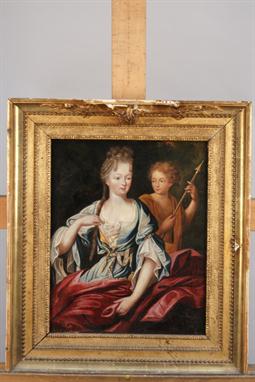

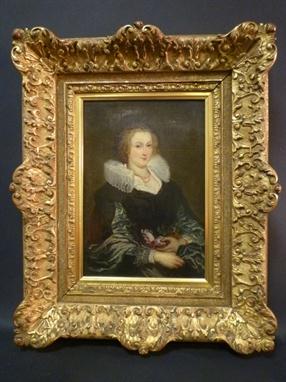
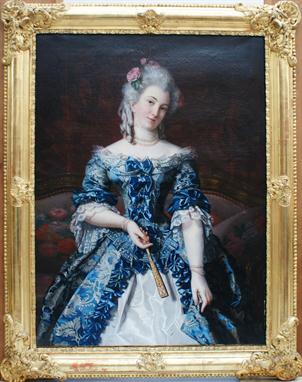



















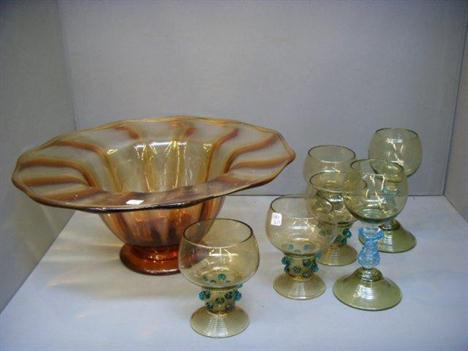








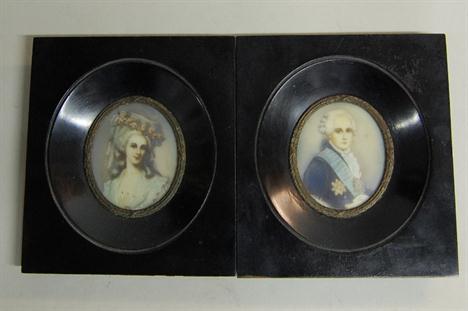
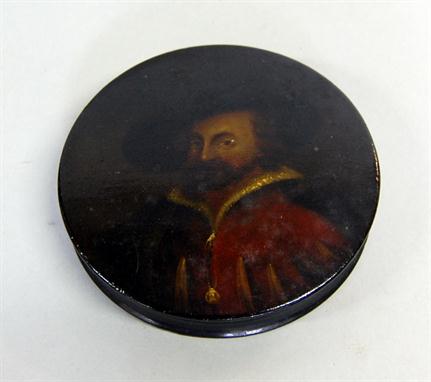















![Exploration ([Lot of 3 - Captain Cook]), ca. 1780. x ”. (HC) This lot includes 2 portraits of British explorer Captain](http://lot-images.atgmedia.com/SR/36385/2862480/841-2012510171130_468x382.jpg)









